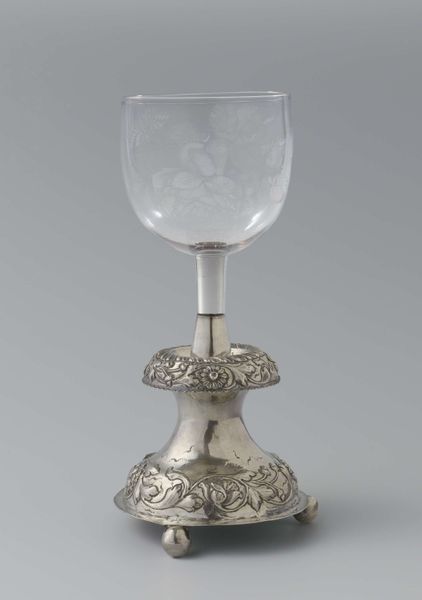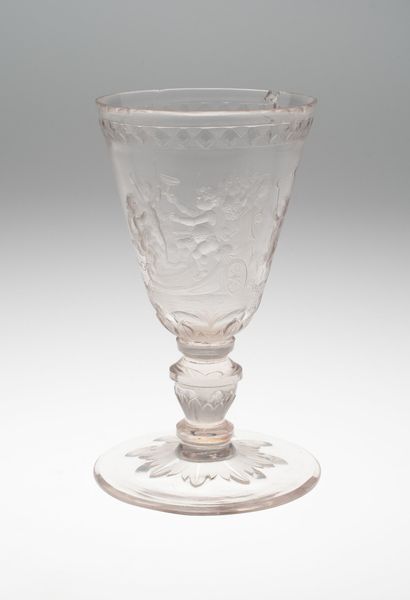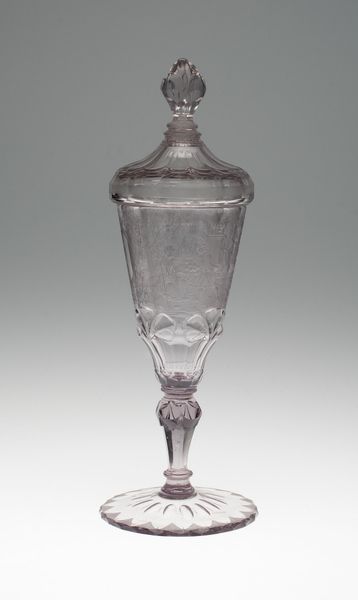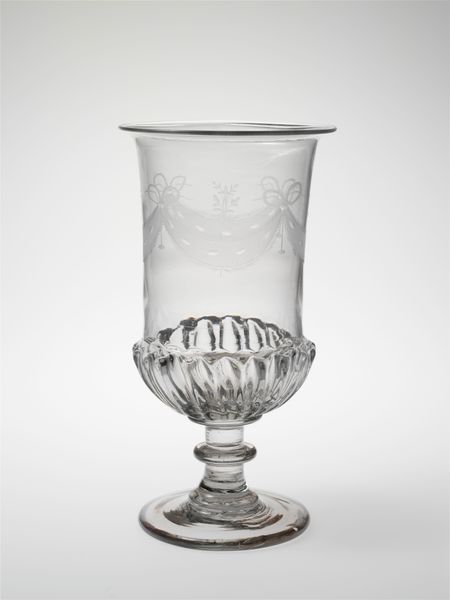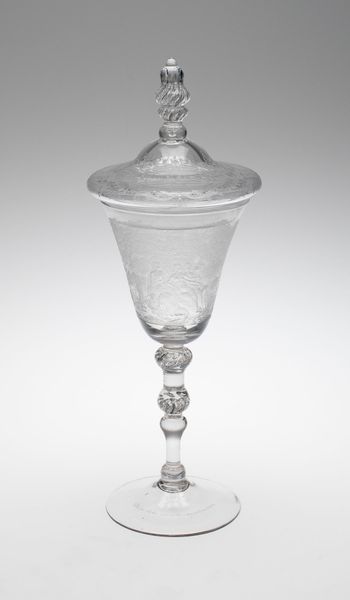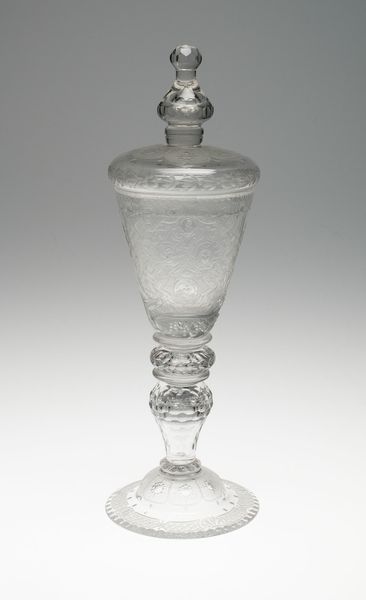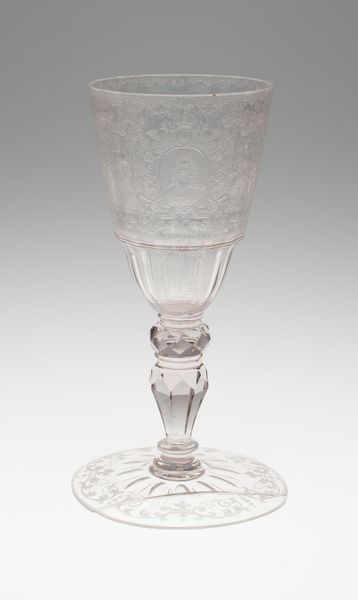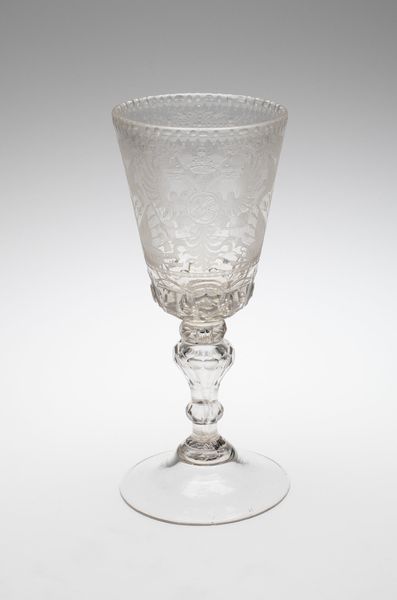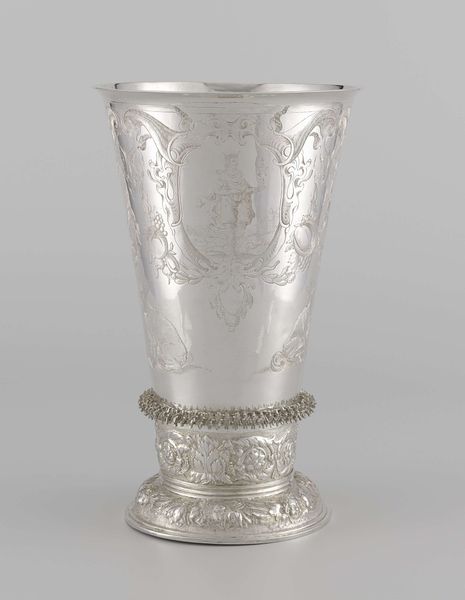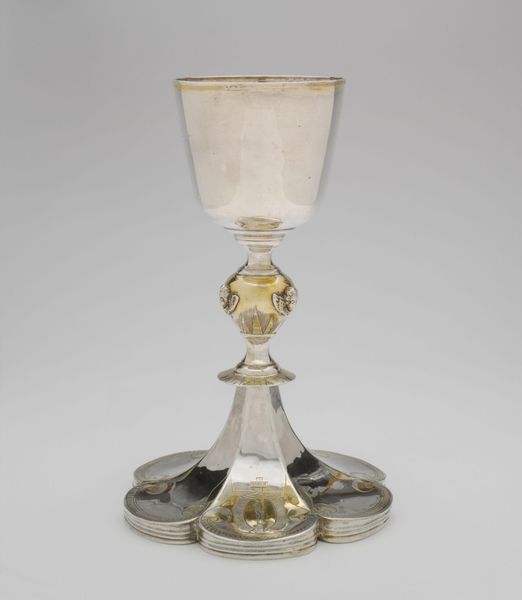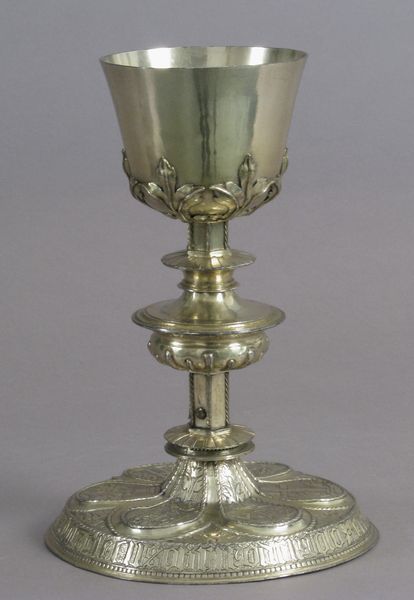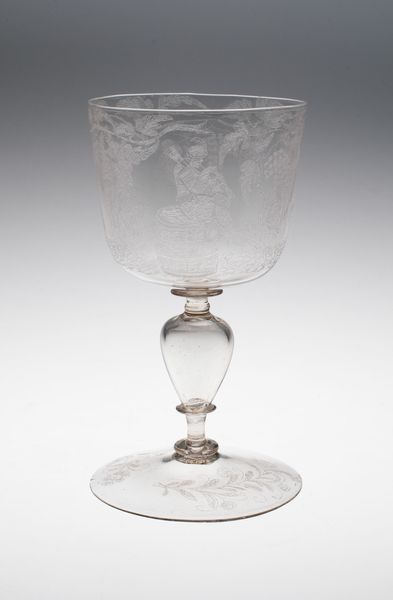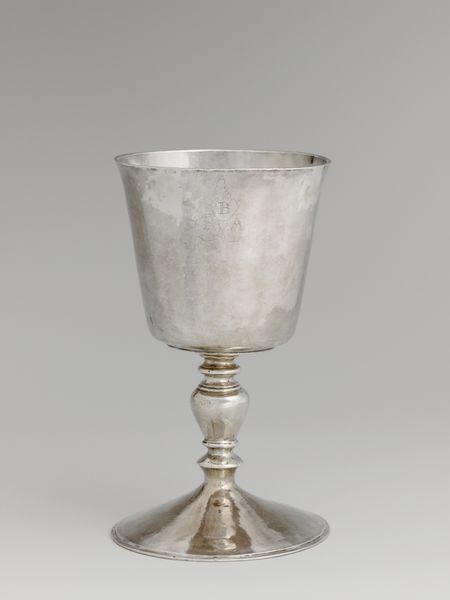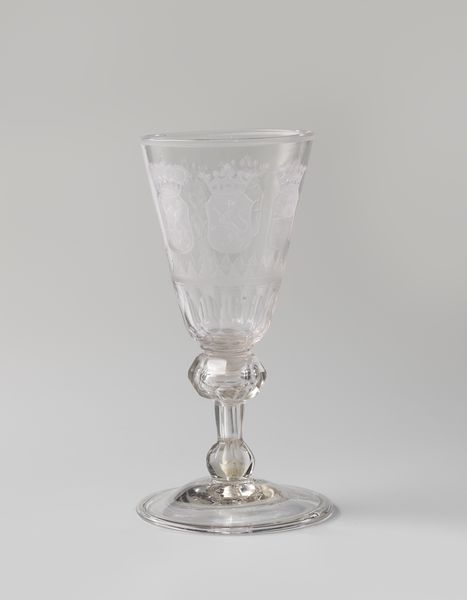
glass
#
glass
#
decorative-art
Dimensions: 16.5 × 8.3 cm (6 1/2 × 3 1/4 in.)
Copyright: Public Domain
Editor: This is a goblet by Christopher Gottfried Schneider, crafted between 1745 and 1850. It’s made of glass and has an ornate, almost baroque quality to it. It's beautiful, but also seems almost fragile. How would you interpret this work? Curator: Considering its period, the "Goblet" functions as a social artifact as much as an artistic one. Wealth was consolidating, and elaborate displays of status, like owning such a goblet, became crucial. Do you notice the glasswork versus the base? Editor: Yes, the glass looks so delicate and the base seems weighty. Curator: Precisely! That contrast illustrates a changing societal structure. The delicacy of the glass reflects refined tastes. The elaborate silver base signals grounded, material wealth necessary to display those refined tastes. Where do you think it was displayed, and for what purpose? Editor: Well, with the level of detail, probably somewhere very prominent? Like a dining room, or maybe a cabinet specifically for showing off precious items. A display piece, absolutely. Curator: Exactly. Owning something like this signalled participation in a specific social sphere. Goblets like these were less about their practical use and more about participating in social rituals, especially the performance of gentility. Can you imagine the socio-economic impact of glassworks that made fragile glass, and silverworks that produce ornamental metal bases, just so that a few families can be more genteel? Editor: So it’s a beautiful object, but it’s also indicative of pretty immense social inequalities. It gives me a lot to consider! Curator: Agreed. Objects like this connect aesthetics with economics and social hierarchy. Seeing the relationship between material culture and power structures deepens our understanding of history and ourselves.
Comments
No comments
Be the first to comment and join the conversation on the ultimate creative platform.
